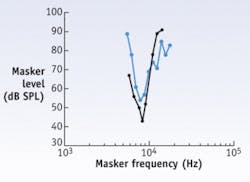In recent years the bulk of the scientific sessions at the SPIE Biomedical Optics (BiOS) conference have focused on optical imaging for diagnostic and biological applications. This year, however, saw the resurgence of more targeted “cause and effect” uses of lasers and optics, on a much finer scale than traditional therapeutic procedures such as vision correction, hair removal, and skin resurfacing.
In fact, one of the hottest “Hot Topics” at the 2008 BiOS conference (Jan. 19-24; San Jose, CA) was nerve stimulation. Neuroscientists use nerve stimulation to study the fundamental principles of the nervous system and to research causes and treatments of Parkinson’s, Alzheimer’s, and nerve regeneration, among other things. Medical professionals use nerve stimulation for everything from pain and depression management to brain mapping. These applications traditionally involve stimulating the nerves with electrical current, which has some limitations given the ability of electrical current to transmit in wet media.
Several groups are now looking at optical nerve-stimulation techniques as an alternative to electrical stimulation. Pioneered by researchers at Vanderbilt University (Nashville, TN) and currently being commercialized by Aculight (Bothell, WA), laser-based nerve stimulation has emerged as a very active area of application development in the last 12 months. Aculight, which has licensed much of the key technology and techniques developed at Vanderbilt, is working with proprietary mid-infrared (1850 nm) diode-laser technology to deliver optical energy directly to the sciatic, vestibular, and cochlear nerves to address issues with gait, balance, and hearing (see figure). The company is part of a government-funded collaborative effort with researchers and clinicians from Vanderbilt, Northwestern University, Harvard Massachusetts Eye and Ear Infirmary, Walter Reed, and Naval Medical Center San Diego to evaluate and treat soldiers returning from Iraq and Afghanistan who are suffering from blast-induced traumatic brain injury (see www.bioopticsworld.com/articles/316643).
“Fundamental work done a few years ago at Vanderbilt demonstrates that, just as an electrical current can stimulate nerves, so can light,” says Mark Bendett, director of medical products for Aculight. “The key nugget for optical nerve stimulation is that it is far more spatially specific than electrical stimulation. Where you put the light is where it goes. This is important for things like the cochlear nerve, which is extremely tiny, and also for vestibular reactions.”
Other applications
A growing number of research groups are pursuing IR-laser applications for additional nerve-stimulation applications, according to Bendett. At the BiOS conference, Nathaniel Fried of the University of North Carolina at Charlotte gave a presentation on the use of a thulium-fiber laser (1873 nm) to stimulate the cavernous nerve in rat prostates, thus overcoming (among other things) erectile dysfunction. In lab-based experiments involving five male rats, Fried and colleagues from Johns Hopkins University applied pulse energies of 7.5 mJ, radiant exposure of 1 J/cm2, pulse duration of 2.5 ms, pulse rates of 10 Hz, and 1 mm spot diameter for 60 s. They concluded that optical nerve stimulation may be an alternative to electrical nerve stimulation for measuring erectile response and preserving the cavernous nerves during radical prostatectomy.
Other potential applications for optical nerve stimulation involve the vagus nerve. Electrical stimulation of the vagus nerve is already used to answer fundamental questions about the function of the nervous system, research diseases such as multiple sclerosis and Alzheimer’s, and in clinical applications such as pain and depression management and the reduction of Parkinson’s tremors. Researchers are now beginning to apply optical technologies to these and other parasympathetic nerve responses, including high blood pressure and weight loss.
At the BiOS meeting, a team from the University of Maryland School of Medicine discussed its early experiments using a 1.85 µm diode laser to stimulate the vagus nerve in rats; among other things, the team was able to determine the feasibility of using IR stimulation to probe neuronal circuit properties in intact neural tissue and compare IR stimulation with another photostimulation technique (focal photolytic release of “caged” molecules).
